ArchiMate is The Open Group‘s open and independent modelling language for enterprise architecture, supported by different tool vendors and consulting firms. ArchiMate provides instruments to support enterprise architects in describing, analyzing and visualizing the relationships among different architecture domains in an unambiguous way, similar to those well-established disciplines like civil engineering or building and construction using internationally accepted standards for describing their designs.
ArchiMate is a modelling technique (“language”) for describing enterprise architectures. It presents a clear set of concepts within and relationships between architecture domains, and offers a simple and uniform structure for describing the contents of these domains. Just like an architectural drawing in classical building architecture describes the various aspects of the construction and use of a building,
ArchiMate offers a common language for describing the construction and operation of:
This insight helps stakeholders to design, assess, and communicate the consequences of decisions and changes within and between these business domains.
| Draw ArchiMate with a Certified EA Tool |
| Visual Paradigm Enterprise Edition is a certified ArchiMate 3 enterprise architecture tool. It supports all ArcihMate 3 vocabulary, notation, syntax, and semantics. |
| [Download Now] |
Models have played an important role in business for a long time. Process models, information- and data models, application landscapes, strategic models, operational models. Organizations try to connect their models, to gain insight in the way the enterprise works from many different perspectives. Typically, models become more high-level, focusing on the essence of the organization. These developments have led to the development of the ArchiMate language, which allows high-level modeling within a domain, but allows modeling the relations between domains.
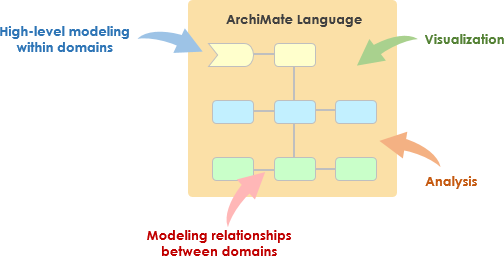
As shown the Figure above, the main reasons for enterprise architect to adopt ArchiMate are as follows:
The main benefits of ArchiMate for modeling your enterprise architectures are:
The latest version of the language is the ArchiMate 3.0 Specification, which was published in June 2016. ArchiMate 3.0 is a major update to the standard, with many new concepts.
New features included in Version 3.0 include:
The new version of the language has been created to respond to a number of requirements:
Related Resources:
The ArchiMate specification can be downloaded from The Open Group’s ArchiMate Forum.
The aspects and layers of the core, as defined by the business, application and technology elements, can be organized as a framework of nine cells, as illustrated in Figure below.
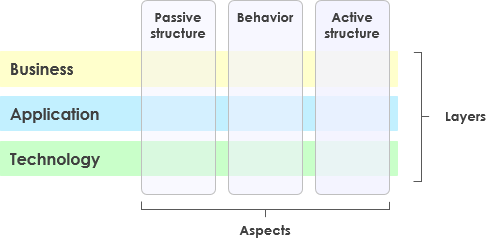
The structure of the framework allows for modeling of the enterprise from different viewpoints, where the position within the cells highlights the concerns of the stakeholder. A stakeholder typically can have concerns that cover multiple cells.
The main concepts and relationships of the ArchiMate language can be seen as a framework, the so-called ArchiMate Full Framework.
It divides the enterprise architecture into a business, application and technology layer.
In each layer, three aspects are considered: active elements that exhibit behavior (e.g. Process and Function), an internal structure and elements that define use or communicate information.
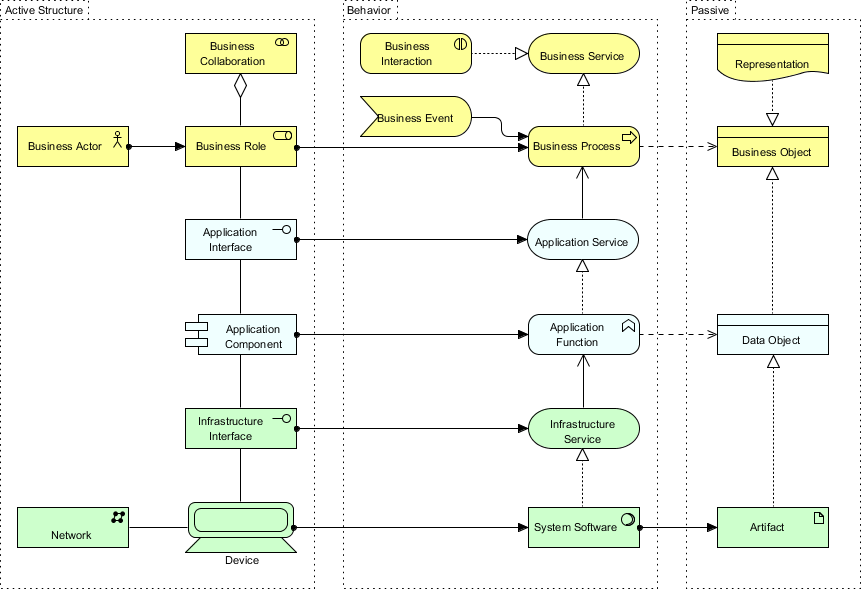
Higher layers use services provided by lower layers. The Business layer offers products and services to external customers which are realised by business processes performed by business actors. Application layer supports the business layer with application services which are realised by (software) applications. Technology layer offers infrastructural services (e.g., processing, storage and communication services) needed to run applications, realised by computer and communication hardware and system software.
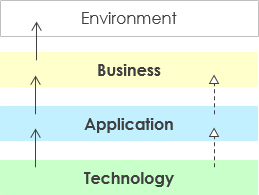
The full ArchiMate language adds several layers and an aspect to the core framework. The physical elements are added to the Technology layer for modeling physical facilities and equipment, distribution networks, and materials. Besides, an additional motivation aspect and the implementation and migration elements are added. The resulting full ArchiMate framework is the figure below.
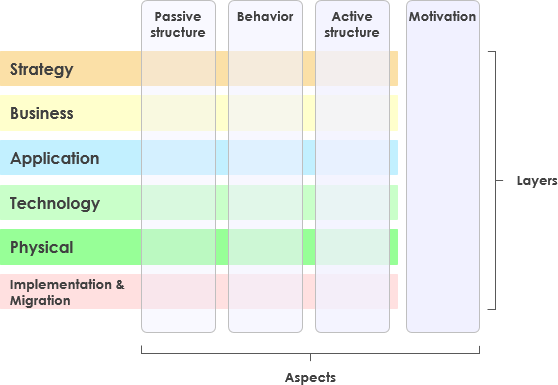 Core Layers:
Core Layers:
The most important concepts of ArchiMate are shown below. You can clearly see the uniform approach across layers.
A layered view provides a natural way to look at service-oriented models. The higher layers use services that are provided by the lower layers. ArchiMate distinguishes three main (Core) layers:
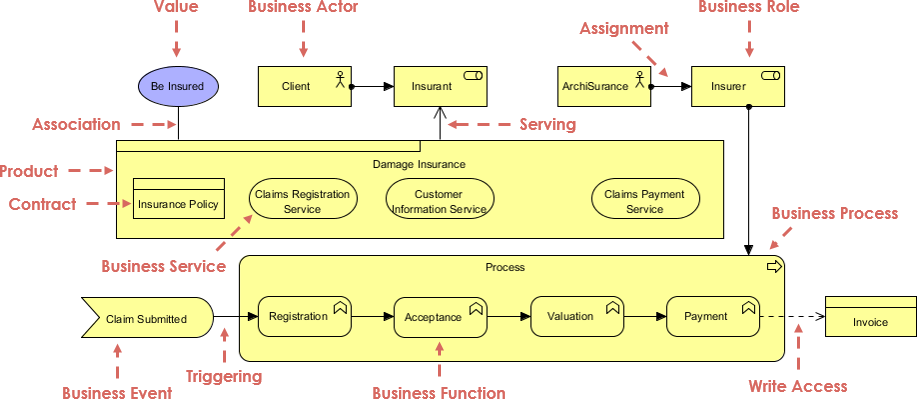
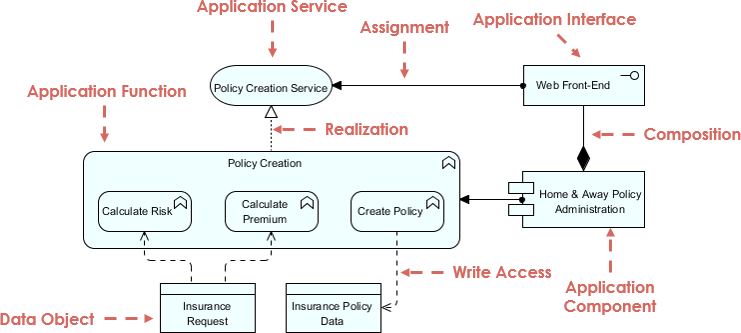
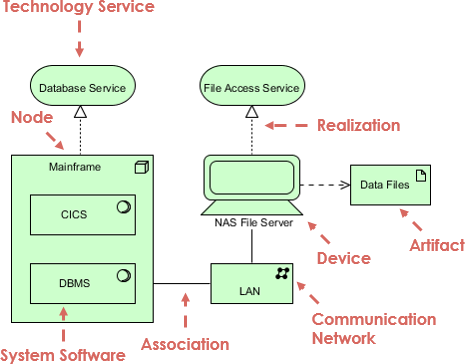
The ArchiMate Motivation elements enable the modeling of stakeholders, drivers for change, business goals, principles and requirements.
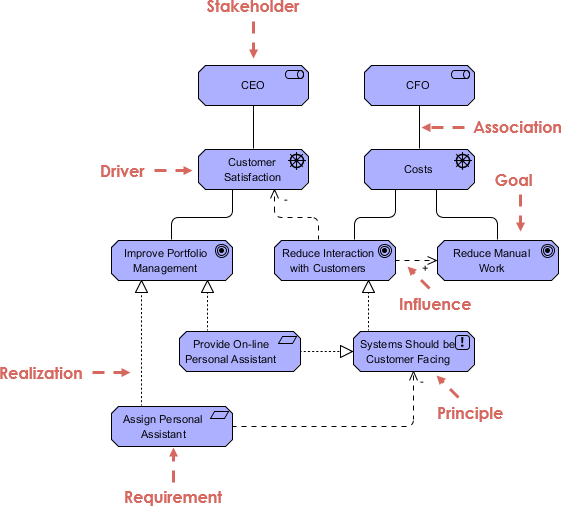
The ArchiMate Implementation and Migration elements enable the modeling of project portfolio management, gap analysis and transition and migration planning.
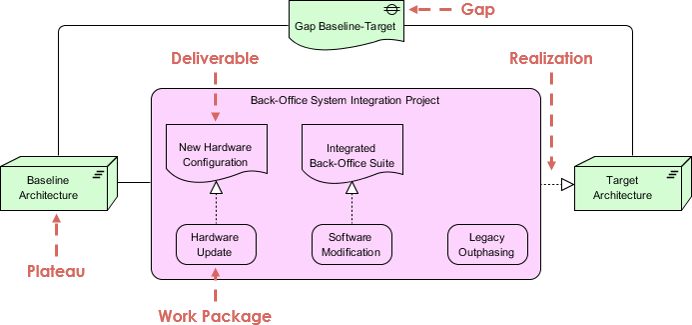
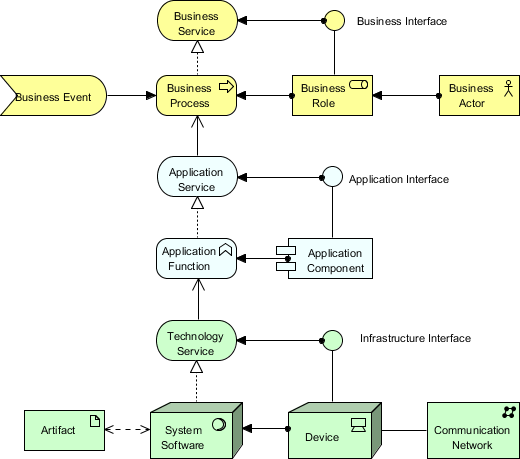
In the example ArchiMate model below, you can see the integration of the various ArchiMate layers.
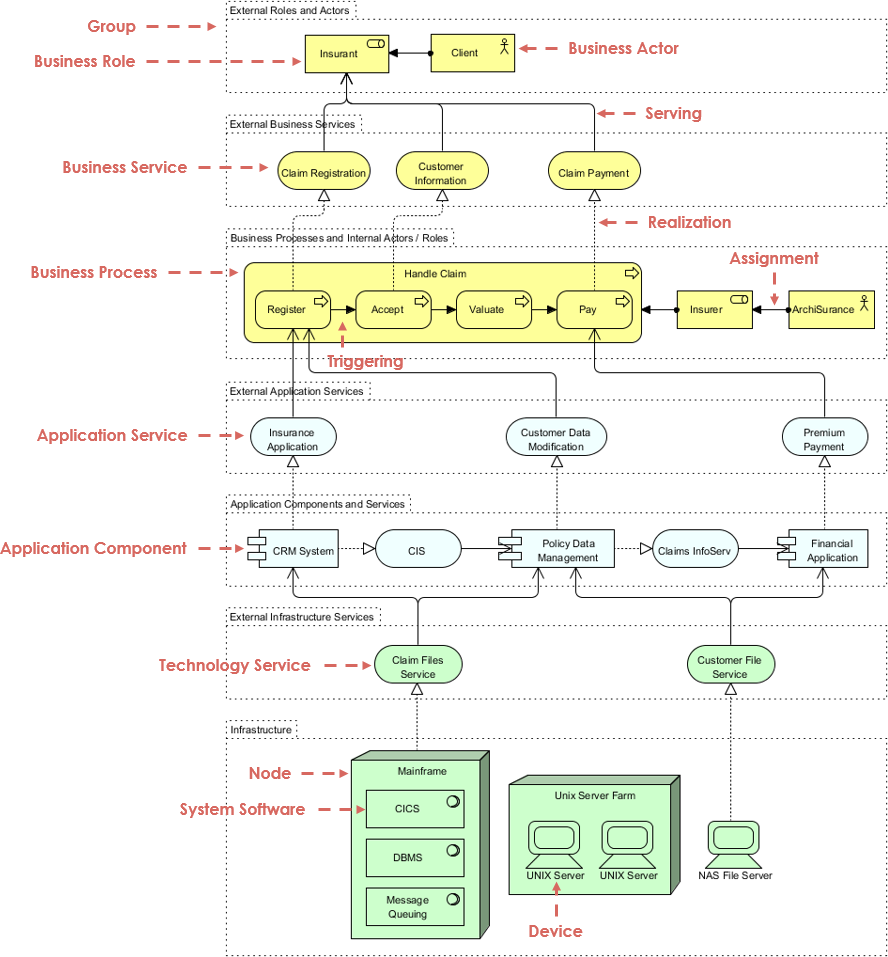
The ArchiMate language, as described in this Technical Standard, complements TOGAF in that it provides a vendor-independent set of concepts, including a graphical representation, that helps to create a consistent, integrated model “below the waterline”, which can be depicted in the form of TOGAF views.
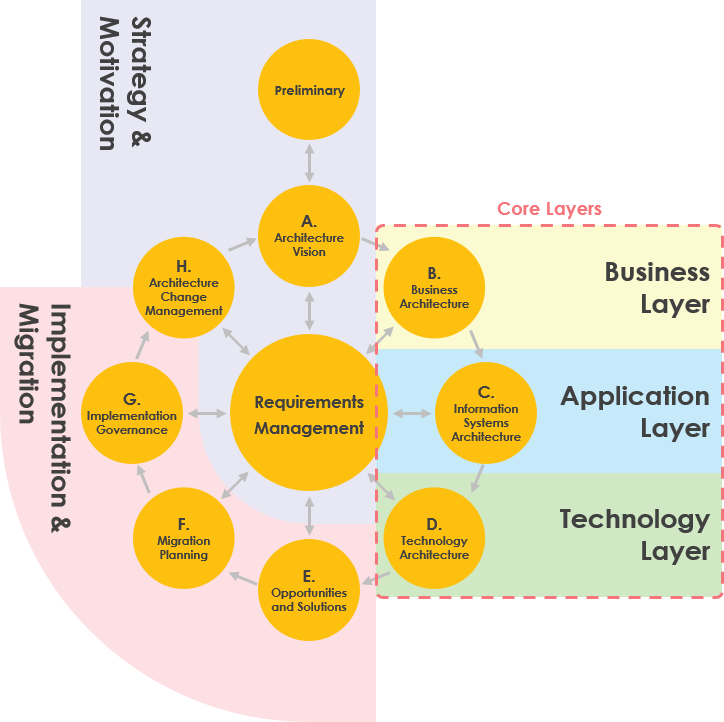
| Want to create ArchiMate diagrams? |
| Try Visual Paradigm Enterprise Edition, an enterprise architecture software that features a powerful ArchiMate drawing tool, ArchiMate viewpoint management tool and TOGAF Guide-through Process. |
| [Try it Free] |